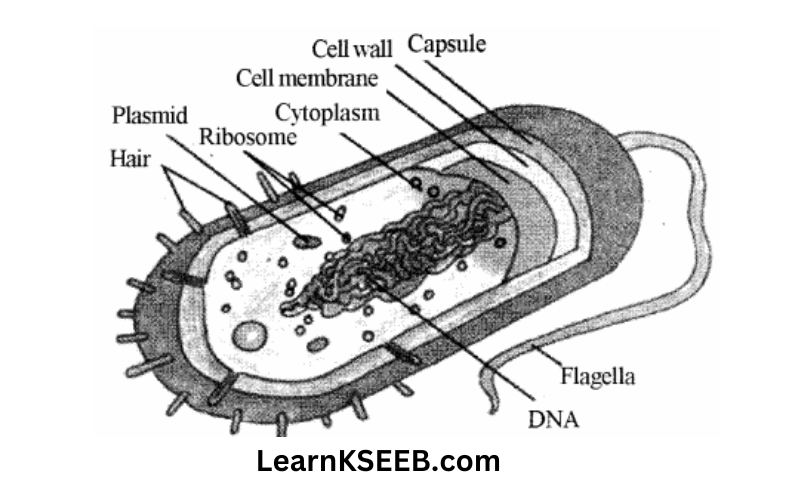Karnataka Class 9 Science Model Question Papers 2023 Set 3
Choose the correct alternative and Write the complete answer along with its alphabet in the sheet provided:
Question 1. The stratospheric ozone depletion leads to
- Global warming
- Forest fires
- Increase in the incidence of skin cancers
- All the above
Answer: 4. All the above
Question 2. Health is a
- Complete physical well being
- Mental well being
- Social well being
- All the above
Answer: 4. All the above
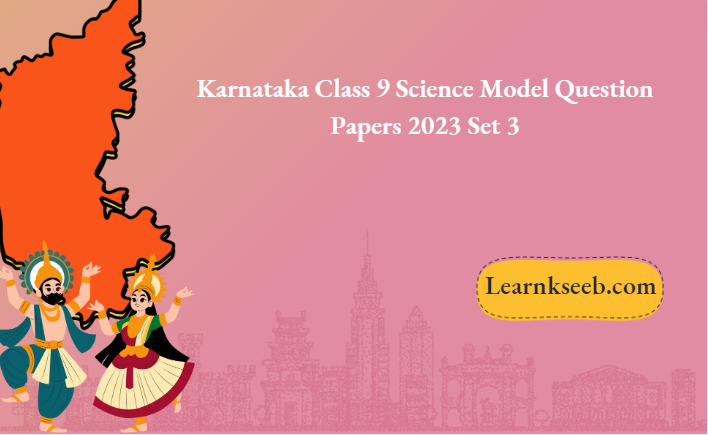
Question 3. Which gas is a product of photosynthesis
- Oxygen
- Carbon dioxide
- Ozone
- Nitrogen
Answer: 1. Oxygen
Karnataka 9th Standard Science Model Paper 2023 Set 3 Free PDF with Answer Key
Question 4. AIDS is caused by
- Bacteria
- Fungus
- Air
- Virus
Answer: 4. Virus
Question 5. Sound waves with frequencies below the audible range are called
- Infrasonic
- Ultrasonic
- Supersonic
- Sub supersonic
Answer: 1. Infrasonic
Question 6. The rate of doing work is known as
- Work
- Energy
- Impulse
- Power
Answer: 4. Power
Question 7. The value of the gravitational constant is
- 6.67 x1011Nm2 /kg2
- 6.67 x10-11Nm2kg-2
- 11.67 x 1011 Nm2/kg
- 66.7 x 1011 Nm2 /kg
Answer: 2. 6.67 x10-11Nm2kg-2
Question 8.A physical quantity that cannot be negative
is_____________.
- Displacement
- Velocity
- Acceleration
- Distance
Answer: 4. Distance
Class 9 Karnataka Science Model Paper 2023 Set 3 Solved Questions PDF
Question 9. Which of the following is thallophyte?
- Bacteria
- Fungi
- Algae
- All of these
Answer: 3. Algae
Class 9 Science Model Papers Karnataka Set 3
Question 10. The molecular formulae of sodium sulfide is
- Na2S
- NaS
- NaS2
- Na20
Answer: 1. Na2S
Match the following:
A B
Sublimation Changing vapor into liquid
Condensation Bulk phenomenon
Boiling Surface phenomenon
vapourization Solid into vapor without becoming liquid
Answer:
A B
Sublimation Solid into vapor without becoming liquid
Condensation Changing vapor into liquid
Boiling Bulk phenomenon
Vapourization Surface phenomenon
Answer the following:
Question 1. An object travels a distance of 16m in 4s and then another 16m in 2s. What is the average speed of the object?
Answer:
\(\text { Average speed }=\frac{\text { Total distance }}{\text { total time }}\)
\(=\frac{16+16}{4+2}=\frac{32^{5.33}}{6}\)
=5.33m/s
Question 2. If a balloon is filled with air and its mouth untied, the air is released from its mouth in the downward direction, and the balloon moved upward.
Answer: The release of air in the downward direction is the active movement of the balloon in the upward direction is a reaction.
Question 3. Define latent heat of fusion.
Answer: The amount of heat energy required to change 1 kg of solid into liquid at its melting point is known as latent heat of fusion.
Question 4. What types of mixtures are separated by the technique of crystallization?
Answer: Impure samples can be converted into pure form.
Question 5. What is meant by the term chemical formula?
Answer: The chemical formula of a compound is a symbolic representation of its composition.
Karnataka Board 9th Science Model Paper 2023 Set 3 Latest Exam Pattern
Question 6. Helium atom has an atomic mass of 4u and two protons in its nucleus. How many neutrons does it have?
Answer:
mass number = p + n
4 = 2 + n .
4 – 2 = n
∴ n = 2
Question 7. Where are proteins synthesized inside the cell?
Answer: In Ribosomes.
Question 8. Define inertia
Answer: The natural tendency of objects to resist a change in their state of rest or of uniform motion is called inertia.
Question 9. What is relative density?
Answer: The relative density of a substance is the ratio of its density to that of water.
Question 10. In which kingdom would you place an organism which is unicellular, eukaryotic, and photosynthetic?
Answer: Protista
Answer the following:
Question 1. State any two characteristics of Mammalia. Name two egg-laying mammals.
Answer:
- They have mammary glands to feed their young ones
- They are warm-blooded with four-chambered hearts.
Egg-laying mammals: – platypus, Echidna
Question 2. Twenty waves pass through a point in two seconds. If the distance between one crest and the adjacent through is 1.5m calculate
- The frequency
- The wavelength
Answer:
\(f=\frac{20}{2}=10 \mathrm{~Hz}\)\(1.5 \mathrm{~m}=\frac{\lambda}{2}\)
λ = 15.2
λ = 3m
9th Standard Karnataka Science Sample Paper 2023 Set 3 with Important Questions
Question 3.
- How is work done by a force measured?
- A porter lifts luggage of 20kg from the ground and puts it on his head 1.7m above the ground. Find the work done by the porter on the luggage (g = 10m/s2)
Answer:
- The product offered and displacement w = F X S
- given
m= 20kg, g = 10m/s2, h= 1.7m
work done = mgh
= 20 x 10 x 1.7
= 340 J
Question 4. What happens when
- The buoyant force exerted by the fluid is greater than the weight of the body.
- The buoyant force exerted by the fluid is equal to the weight of the body.
Answer:
- The Body will float on the surface
- The body will float but will stay slightly immersed in the fluid.
Karnataka State Board Class 9 Science Model Paper 2023 Set 3 with Step-by-Step Solutions
Question 5. State any four ways by which an AIDS virus spreads from an infected person to a healthy person.
Answer:
- sexual contact with the infected person.
- pregnant mother to her fetus
- Blood contact with an infected person
- Using needles or syringes of the infected person.
Question 6. Name the types of tissue present in
- The lining of the kidney tubule.
- The inner lining of the intestine.
Answer:
- Cuboidal epithelium
- Columnar epithelium
Question 7. When we put raisins in water, why do they swell?
Answer: Raisins are dry with less water inside, when they are kept in water, osmosis takes place, water flows through the cell wall and cell membrane of the raisins and therefore it swells.
Question 8. Why do we see water droplets collected on the outer surface of a glass container, containing ice?
Answer: The water vapor present in the air, comes in contact with the cold outer surface of the container thereby condensing it to form water droplets
Question 9. Draw a flow diagram showing the process of obtaining gases from the air.
Answer:

Question 10. Draw the velocity time graph for the uniform motion of an object.
Answer:
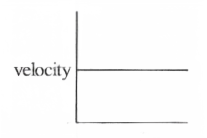
Question 11. Write the chemical formula for
- Zinc phosphate
- Lead carbonate
Answer:
- Zn3(PO4)2
- PbCO3
Karnataka 9th Science Sample Paper 2023 Set 3 for Board Exam Preparation
Question 13. The composition of the nuclei of two atomic species X and Y are given as under
X Y
protons = 6 6
Neutrons = 6 8
give the mass numbers of X and Y. What is the relation between the two species?
Answer:
mass number of X = P + N
= 6 + 6
= 12
mass number of Y = P + N
= 6 + 8
= 14
∴ The atomic number is the same that is 6 Hence X and Y are isotopes of the same elements.
Question 14. Name different types of meristematic tissues
Answer: Apical meristem, lateral meristem intercalary meristem.
Question 15. In a high jumps athletic event, why are athletes made to fall either on a cushioned bed or on a sand bed?
Answer: In a high jumps athletic event, athletes are made to fall either on a cushioned bed or on a sand bed so as to increase the time the athletes fall to stop after making the jump. This decreases the rate of change of momentum and hence the force.
Question 16. A person holds a bundle of hay over his head for 30 minutes and gets tired. Has he done the same work or not? Justify your answer.
Answer: The person does not do work because no displacement takes place in the direction of applied force as the force acts in the vertically upward direction.
Question 17. How are clouds formed?
Answer: The water evaporates due to the heating up of water bodies and other biological activities. The air also heats and rises. On rising, it expands and cools to form tiny droplets. These droplets grow bigger, expands, and form clouds. The collection of dust and other suspended particles facilitates the process.
Question 18. What is pasturage and how is it related to honey production?
Answer: Pasturage is the availability of flowers from which bees collect nectar and pollen. It is related to the production of honey as it determines the taste and quantity of honey.
Question 19. How are fish obtained?
Answer: There are two ways of obtaining fish, one is from natural resources, which is called capture fishing. The other way is by fish farming which is called culture fishery.
Question 20. What is echo ranging? State any one application of this technique.
Answer: The usage of ultrasound in sonar is known as echo ranging. This method is used to determine the depth of the sea, to locate underwater hills, valleys, submarine icebergs, sunken ships, etc.,
Answer the following:
Question 1. Differentiate between mass and weight.
Answer:
Mass:
- It is a scalar quantity
- It remains constant everywhere
- Its SI unit is kg
- It can never be zero
- Mass is the content of matter in a body Weight
Weight:
- It is a vector quantity
- It changes as gravity changes
- Its SI unit is newton
- At the center of the earth weight of a body is zero.
- Weight is the force by which the earth attracts it.
Question 2. State the three of Newton’s laws of motion.
Answer:
- The first law of motion: An object continues to be in a state of rest or of uniform motion along a straight line unless acted upon by an unbalanced force.
- The second law of motion: The rate of change of momentum of an object is proportional to the applied unbalanced force in the direction of the force.
- Third law of motion: To every action, there is an equal and opposite reaction and they act on two different bodies.
Question 3. Define the following
- Melting point
- Boiling point
- Latent heat of fusion
Answer:
- Melting point: The temperature at which solid melts to become a liquid at the atmospheric pressure is called its melting point,
- Boiling point: The temperature at which a liquid starts boiling at the atmospheric pressure is known as its boiling point.
- Latent heat of fusion: The amount of heat energy that is required to change 1kg of a solid into liquid at atmospheric pressure at its melting point is known as the latent heat effusion.
Karnataka Board 9th Class Science Model Question Paper 2023 Set 3 with Answer Key
Question 4. Differentiate between animals belonging to the Aves group and those in the Mammalia group.
Answer:
Aves:
- The body is covered by feathers
- The body is streamlined that is boat-shaped
- Forelimbs are modified into wings for flight
- The mouth is modified into beaks.
Example: sparrow, pigeon
Mammalia:
- The body is covered by hair
- The body is divisible into a head, neck, trunk, and tail
- The animal has 2 pairs of limbs for walking and 2 limbs for doing work
- The mouth has teeth for chewing food.
Example: Man, cow
Answer the following:
Question 1. Calculate the number of moles for the following
- 52g of He (finding mole from mass)
- 12.044 x1023 number of He atoms (finding mole from the number of particles)
Answer:
- The number of moles given mass molar mass\(\frac{\text { given mass }}{\text { molar mass }}=\frac{52^{13}}{4}[/llatex]∴ n = 13
- 1 mole = 6.022 x1023
The number of moles = (Given number of particles)/(Avogadro number)
[latex]=\frac{12.044 \times 10^{23}}{6.022 \times 10^{23}}\)
= 2
Question 2. Write the distribution of electrons in carbon, sodium, and sulfur atoms.
Answer:
carbon (z – 6):
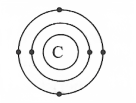
- No. of protons = 6
- No. of electrons = 6
- No. of neutrons = 6
Sodium (z = 11):
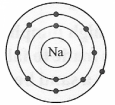
- No. of protons = 11
- No. of electrons = 11
- No. of neutrons = 12
Sulphur (z = 16):
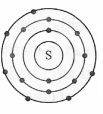
- No. of protons P 16
- No. of electrons = 16
- No. of neutrons = 16
Question 3. A car falls off a ledge and drops to the ground in 0.5s. Let g = 10ms2 (for simplifying the calculations)
Answer:
Solution:
Time (t) = 1/2 sec
Initial velocity u = 0ms-1
Acceleration due to gravity g = 10ms2
Acceleration of the car a = 10ms2 (downward)
- speed v=at
= 10 ms-2 x 0.5sec v = 5ms-1 - average speed = \(\frac{u+v}{2}\)\(=\frac{0 \mathrm{~ms}^{-1}+5 \mathrm{~ms}^{-1}}{2}\)= 2.5ms-1
- Distance travelled s = 1/2 at2\(=\frac{1}{2} \times 10 \times(0.5)^2\)\(=\frac{1}{2} \times 10 \times 0.25\)
s = 1.25n
Question 4. Draw a neat labeled diagram of the Prokaryotic cell
Answer:
